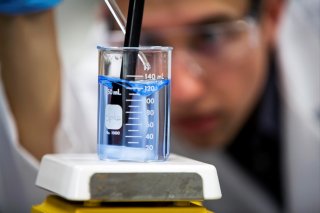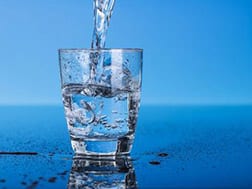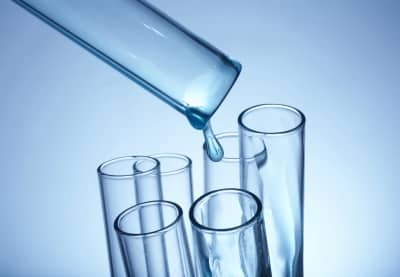Expert Water Testing Services Orlando: Safeguard Your Water High Quality
Expert Water Testing Services Orlando: Safeguard Your Water High Quality
Blog Article
Discover What Is Included in Water Examining and Exactly How It Guarantees Safe Drinking Water
Recognizing the details of water screening is crucial in guaranteeing the high quality and security of our alcohol consumption water. Through a precise examination of physical, chemical, and microbiological elements, water testing determines potential pollutants that can pose wellness dangers. From the existence of hefty metals to dangerous microorganisms, each examination element plays an essential role in preserving the stability of our water supply. Advanced methods like chromatography and spectrometry enhance the accuracy of these analyses. How do these procedures equate into the regulatory frameworks that guarantee security in our daily consumption?
Key Parts of Water Testing
Water screening is a crucial process that entails numerous key parts to guarantee the safety and security and quality of drinking water. Among the primary components is the analysis of physical characteristics, consisting of color, turbidity, and odor. These features can supply initial understandings into the water's problem and prospective contamination resources. In addition, making certain the pH balance of water is essential, as it influences the water's corrosiveness and the effectiveness of sanitation procedures.
One more considerable element entails microbiological evaluation, where water examples are checked out for the existence of bacteria such as bacteria, viruses, and protozoa. If consumed, this analysis is important to recognize biological hazards that might pose health threats. Chemical evaluations are performed to identify organic and not natural substances, such as hefty metals, nitrates, and chemicals, that might be present in the water supply.

Identifying Damaging Pollutants
Detecting unsafe contaminants in drinking water is an essential facet of safeguarding public health and wellness. This procedure involves determining potential risks that can jeopardize the high quality and security of water materials. Impurities can vary from microorganisms such as germs, infections, and protozoa, to not natural compounds like lead, arsenic, and nitrates, as well as organic pollutants including chemicals and commercial chemicals. Each sort of pollutant postures unique wellness risks, making their discovery vital to make certain the water consumed by the public is secure.
Water screening for impurities is generally performed by regulative firms and water energies, utilizing a mix of field sampling and lab evaluation. These assessments are developed to find both naturally happening compounds and anthropogenic toxins that may have gone into the water system via farming runoff, industrial discharge, or maturing facilities. Regular surveillance is necessary, as contamination levels can vary due to environmental adjustments, seasonal variations, or human activities.
The identification of hazardous pollutants informs needed activities, such as water therapy interventions or public advisories, to minimize risks. Early detection is essential to stop negative health and wellness effects, varying from intestinal illnesses to lasting problems like cancer cells, consequently making certain the continued safety of drinking water.

Chemical Evaluation Methods
In the realm of ensuring secure drinking water, chemical evaluation methods play an essential function in determining and evaluating contaminants. These methods are necessary for discovering a large array of chemical materials, consisting of heavy metals, chemicals, and commercial toxins, which can posture considerable health and wellness risks. Methods such as atomic absorption spectroscopy (AAS) and inductively paired plasma mass spectrometry (ICP-MS) are commonly utilized to determine trace levels of metals like lead, mercury, and arsenic. These instruments give precise quantification, promoting conformity with regulatory requirements.
Gas chromatography-mass spectrometry (GC-MS) is one more essential method, especially for natural substances. It divides intricate mixes and recognizes volatile and semi-volatile natural compounds, making certain that pollutants like benzene and toluene are within risk-free limitations. High-performance fluid chromatography (HPLC) is similarly made use of for non-volatile compounds, consisting of particular chemicals and drugs.
Ion chromatography is employed to establish focus of anions and cations, such as nitrates and sulfates, which are essential in evaluating water high quality. These chemical evaluation techniques collectively guarantee that alcohol consumption water remains risk-free by spotting deviations from established purity standards, therefore guarding public health and wellness. Guaranteeing accuracy and Read Full Article accuracy in these examinations is paramount to maintaining the honesty of water safety and security analyses.
Microbiological Testing Methods
Precise microbiological testing is critical for safeguarding public wellness by guaranteeing that drinking water is complimentary from dangerous virus. This procedure entails detecting and enumerating microbes such as microorganisms, infections, and protozoa that might infect water products. Common microorganisms include Escherichia coli, Giardia, and Cryptosporidium, each positioning substantial health risks.
Several approaches are employed in microbiological testing to identify these dangers. The membrane filtering technique is frequently utilized, involving water passing via a filter that captures bacteria, which are then cultured to establish their presence and focus. Conversely, the multiple-tube fermentation technique enables the quantification of coliform microorganisms making use of a collection of dilution and incubation steps.
Improvements in modern technology have actually presented molecular strategies such as polymerase chain response (PCR), which enables the quick and extremely specific discovery of pathogens by enhancing their genetic material. Enzyme-linked immunosorbent assays (ELISA) also use a technique to discover virus by identifying certain proteins or antigens.
These differed methods are important for extensive water quality assessment, making certain that water treatment procedures work and that circulation systems preserve security. By using these microbiological testing methods, potential health and wellness threats can be identified and alleviated quickly.

Significance for Public Wellness
Ensuring the microbiological security of alcohol consumption water straight influences public wellness by protecting against the spread of waterborne diseases. Microorganisms such as microorganisms, infections, and protozoa can result in diseases like cholera, dysentery, and gastrointestinal infections (Water Tesing Services Orlando). The application of thorough water testing procedures is extremely important in recognizing and mitigating these risks, thus securing communities from possible outbreaks
Regular water screening not just discovers microbial pollutants but also examines chemical click resources and physical parameters that can affect health and wellness. As an example, excessive degrees of nitrates or hefty steels such as lead can position significant health and wellness risks, especially to vulnerable populations like infants and pregnant women. By recognizing these dangers early, water screening enables timely treatments, ensuring the water system stays within secure intake requirements.
Moreover, water screening plays a critical role in maintaining public self-confidence in community water supply. It gives transparency and liability, reassuring the general public that their wellness is a priority. For original site policy manufacturers and health officials, the data stemmed from water screening notifies decisions on facilities financial investments and public health and wellness methods, making sure resources are guided where they are most required. This way, water screening is crucial in advertising a healthier, more secure society.
Final Thought
Water screening functions as a crucial mechanism for guaranteeing the safety and top quality of drinking water via comprehensive examination of its physical, chemical, and microbiological residential or commercial properties. By identifying harmful impurities, such as heavy metals and chemicals, and using advanced strategies like chromatography and spectrometry, water screening helps with the recognition of prospective health and wellness risks. The application of rigorous testing methods is vital for maintaining conformity with safety and security criteria, eventually protecting public health and wellness and strengthening self-confidence in community water systems.

By identifying these risks early, water testing enables timely treatments, guaranteeing the water supply continues to be within risk-free intake criteria.
Water screening offers as a necessary device for guaranteeing the safety and high quality of alcohol consumption water via extensive evaluation of its physical, chemical, and microbiological properties.
Report this page